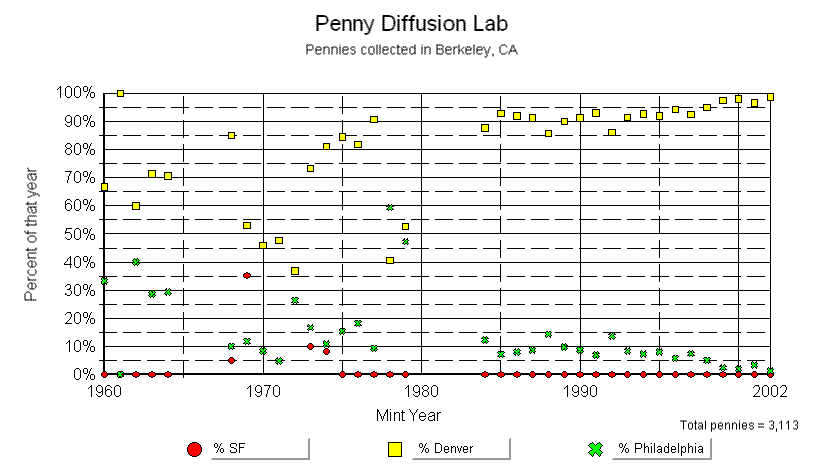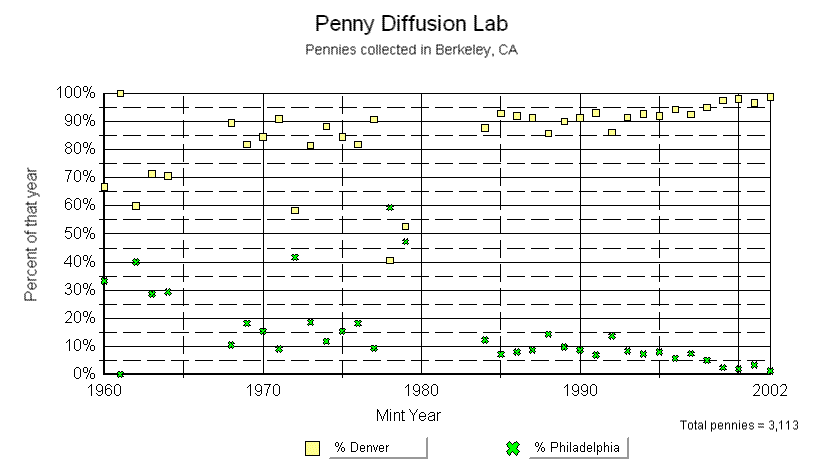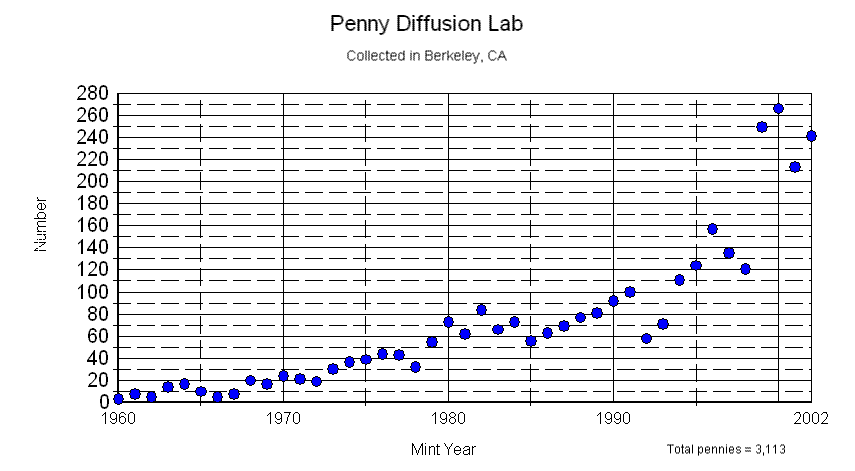


| In February 2003, my two chemistry classes sorted over 3,000 pennies by date and mint mark (city where coins were minted). The pennies were collected in November 2002 as part of our schools fundraising for our yearly community holiday meal. Our goal was to determine if pennies distribution could be a model for gas molecules. While gas molecules clearly have different means of transportation (it is their own internal kinetic energy that moves them, not the pockets of people), the measure of entropy or disorder was seen to increase in the pennies just like in a gas. • Here's a Data collection sheet if you'd like to try this lab in your class. • Here's a spreadsheet in Quattro or Excel you can use to aggregate data. • Here's a link to the US Mint's mint mark pages. |
Results
|



Lee (Amosslee) Trampleasure's Science Education Pages
Home
— Blog
— Trampleasure.net/science/ Home